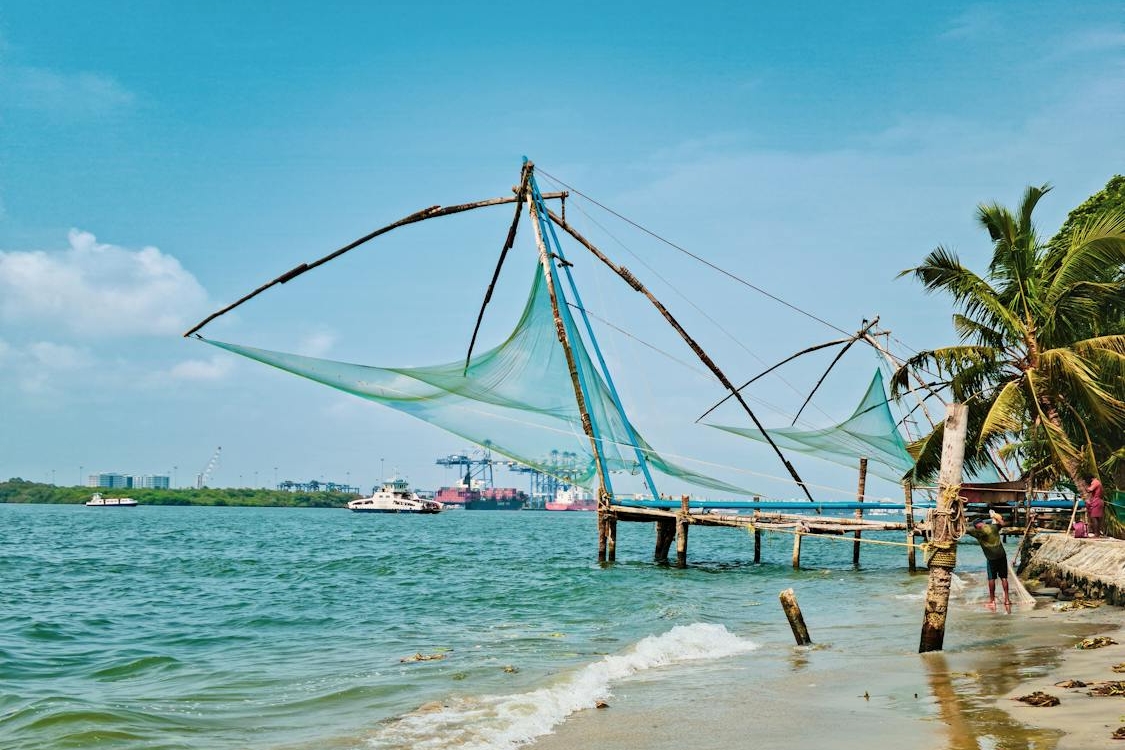Exploring Fort Kochi: the Historic Heart of Kerala
Kerala is perhaps the most glittering of travel destinations in India. Don’t despair when friends gush about Periyar. Don’t feel starved when you hear rhapsodies on appams and stew. Don’t feel adrift at being the only one who hasn’t sailed down Alleppey’s waterways. Don’t sigh at a friend’s Facebook feed and wish that you too had pictures of a Kathakali performance to post. We will show you a side of Kerala that will make your friends think you’ve been to Your Own Country.
Come Breakaway…
Introduction and overview of Fort Kochi
Emerging as a coastal town with a vivid tapestry of history, Fort Kochi gives the perfect initiation into Kerala. Picture streets with the very earliest colonial buildings, carrying imprints of the Portuguese, the Dutch, and the British, and still telling tales of the bygone years. A little taste of what you’re going to find in this charming town is here:
The importance of Fort Kochi dates back to 1503 when the Portuguese explorer Vasco da Gama first landed on the shores of Kerala. A lot of trading activities shaped up, and it can be evidenced even today in the architectural style, food styles, and a few local customs.
Historical Sites
One of the most interesting quarters in Fort Kochi is Jew Town, which for hundreds of years has been a haven for the Malabar Jewish community. The historic Paradesi Synagogue, the oldest synagogue in the Commonwealth of Nations, dates back to (search “Paradesi Synagogue”). Wander through narrow lanes peppered with Antique Shops that spill over with treasures and added charm to Jew Town.
- Chinese Fishing Nets: At sunset, get the iconic shot of these distinctive-looking cantilevered structures, a legacy of the Chinese traders who are believed to have introduced this ingenious fishing method here centuries ago.
- St. Francis Church: This latter-day beautiful church is the oldest European-built church in India. It represents a fusion of both Portuguese and Gothic architectural styles. Constructed by Portuguese friars in 1503, it is in the inventory of the UNESCO World Heritage Site.
- Santa Cruz Basilica: this fine basilica, rebuilt by the British in the late 19th century, is an exquisite example of Indo-Portuguese architecture, rich with carvings and high ceilings.
Tourist Attractions in Fort Kochi
Spice Market: Enter the resplendent Spice Market, a treasure trove for some of the most aromatic spices like cardamom, cloves, and cinnamon. Smell their intoxicating aromas and be prepared to get overwhelmed by the sheer variety on the display of spices.
The Cochin Royal Heritage Trail is an exclusive ½-day experience which takes travelers to Tripunithura (pronounced as Thri-pooni-thoora) the erstwhile capital of the kingdom of Cochin. The streets of Tripunithura are replete with structures and monuments that tell the story of the royal family. It is a part of Cochin that is rarely visited by tourists. So come along on this fascinating trail, become part of the experience and discover the city of Cochin through its royal patrons.
The trail starts with a visit to the nearly 150 yr. old Hill Palace, a grand structure built on 52 acres of land, from where nine Rajah’s ruled over the princely state of Cochin. The palace today has been converted into a museum which has on display many artifacts, antiques and portraits belonging to the royal family, as well as from other royal families of Kerala. We bring these inanimate objects to life through some interesting stories and anecdotes, for example, why none of the Cochin Rajah’s ever wore the gold crown, studded with precious stones, that was gifted by King Immanuel of Portugal?
From the Hill Palace we move to the residential quarters of the royal family (located about 2 kms. away). Many members of the royal family still reside over here, many of them in structures that are over 100 yrs. old. We walk around and listen to the story behind the family temple- selling off its treasures to build the local railway line, almost costing the Rajah his throne. The clock tower built by the Dutch and other heritage structures in the area will transport us to a different period in time.
Cultural Experiences
- Kathakali Dance: Kathakali has been an all-male art form, with even women characters being portrayed by men. In a State which is known for its high female to male ratio, matrilineal lineage and high literacy rates, entry barriers for women into the Arts were high. On this tour we meet a group of highly spirited women Kathakali artistes who broke through the male bastion, excelled in the art and have made a mark for themselves. They share with us their journey of starting an all women Kathakali troupe while alongside explaining the different elements of this fascinating art form- its stories, language, costumes, stage, music, instruments, training, festivals, mythology, et al.
- Local Delights: Walk through these crowded streets and unknown alleys serving authentic Keralan delicacies.
Conclusion
Tips while visiting:
- The best time to visit Fort Kochi is from November to February with its pleasant and dry weather.
- You could walk your way around Fort Kochi, but cycles and rickshaws are also available for hire.
As you depart Fort Kochi, a piece of your heart might remain nestled amidst its charming streets and captivating beauty. One can see history coming alive in Fort Kochi. With its rich heritage, throbbing culture, and mesmerizing beauty, this destination will leave an indelible mark in your memory. So, pack your bags and come Breakaway, to this enchanting town!

